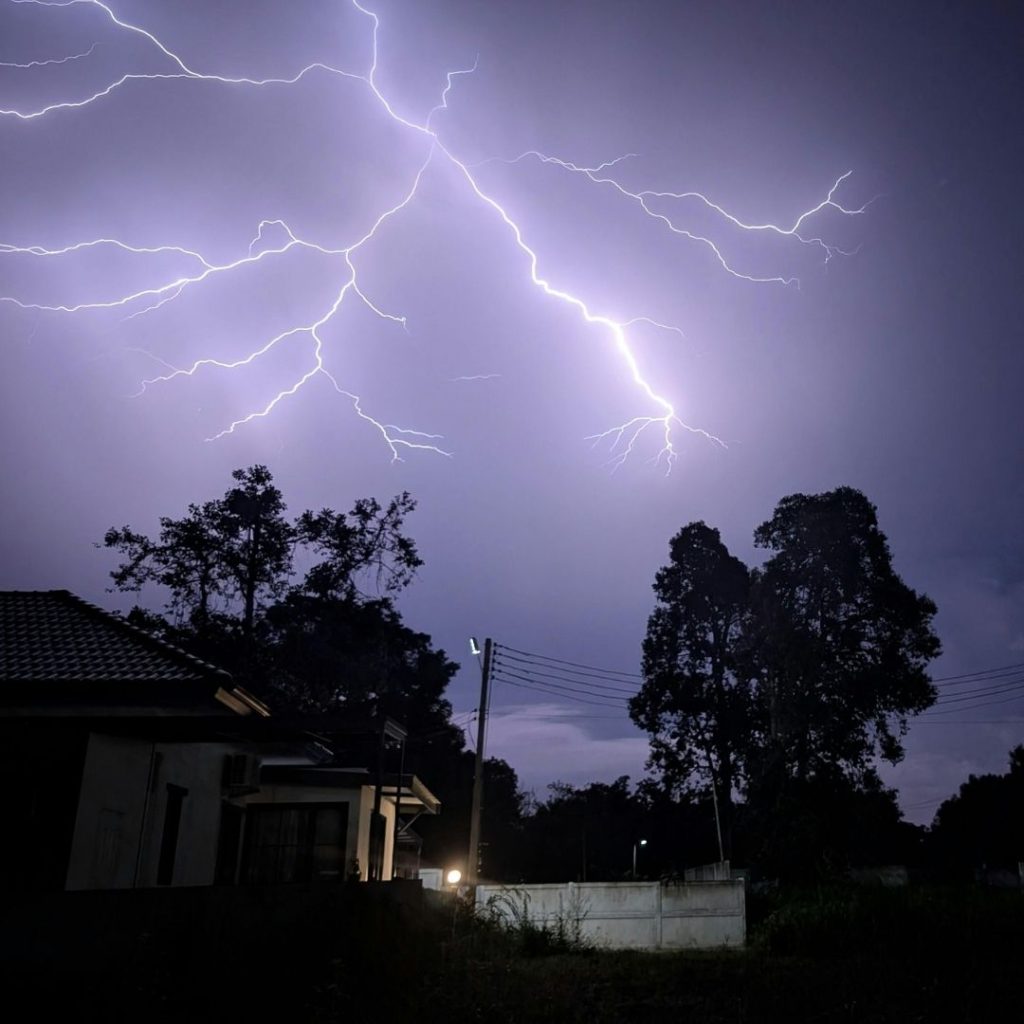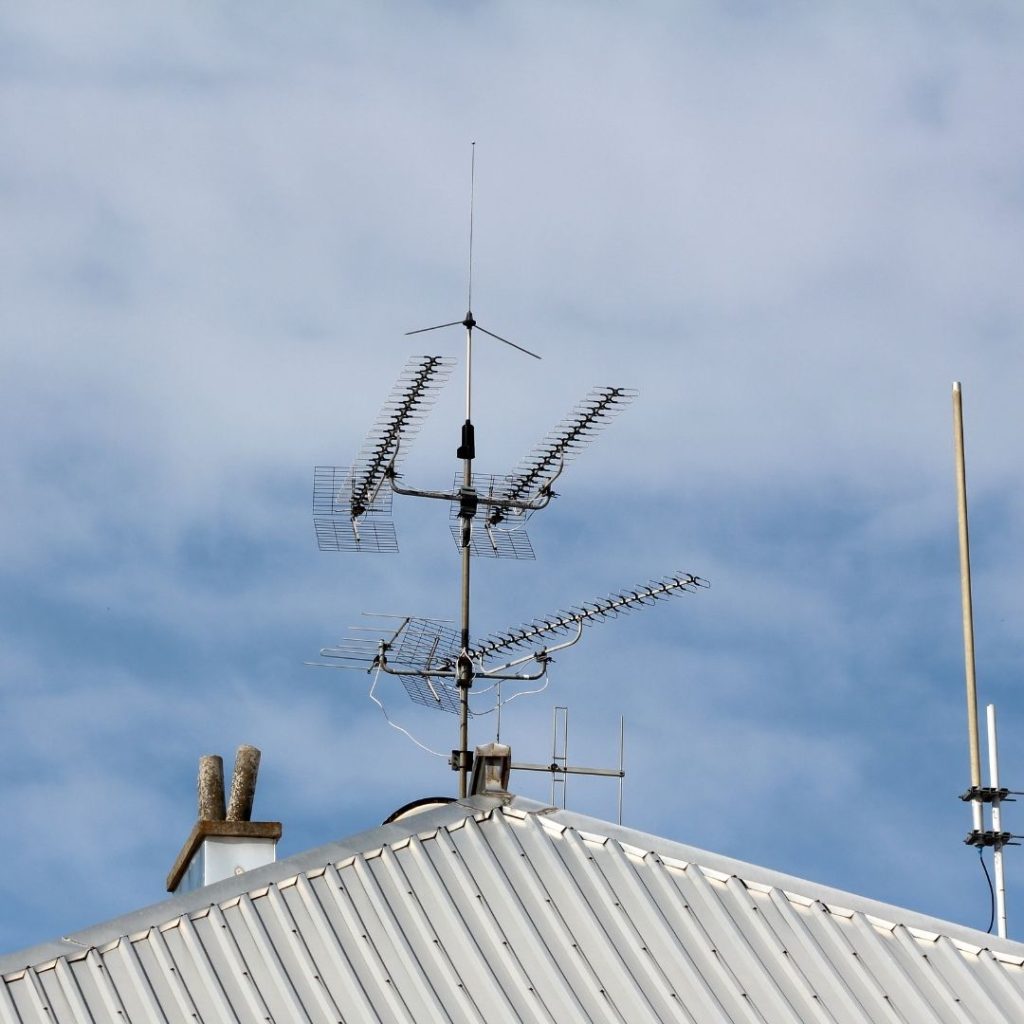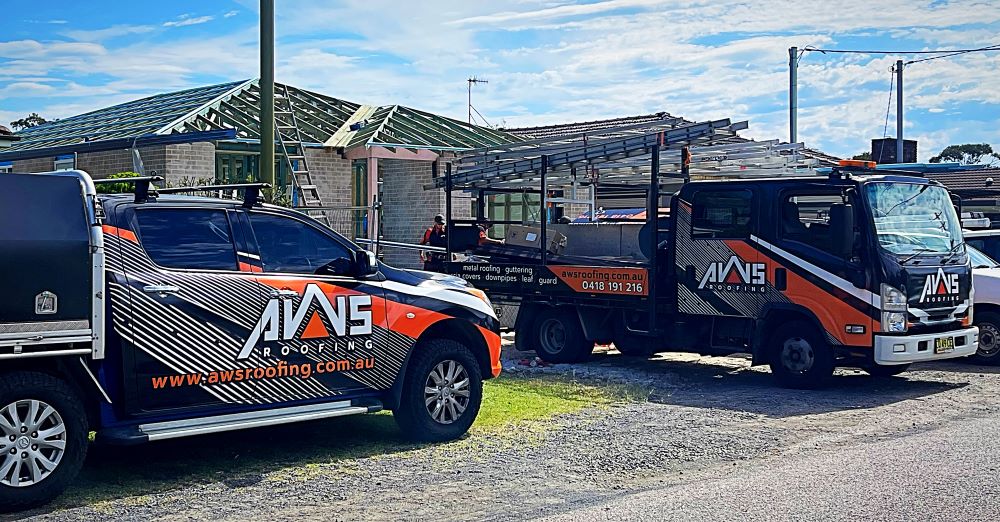Metal roofing is recognized as one of the most robust and enduring roofing solutions available in Australia. The remarkable strength, longevity, and energy efficiency of metal roofs make them a preferred choice for many homeowners. Despite this, a common question arises among property owners — do metal roofs attract lightning?
As an increasing number of homeowners invest in Starlink dishes and various aerial devices, concerns regarding lightning strikes have intensified. This discussion aims to thoroughly investigate the facts surrounding this topic, clarifying why metal roofing, when paired with antennas and satellite systems, can be significantly safer than many may assume.

Understanding the Myth: Do Metal Roofs Attract Lightning Strikes?
Contrary to widespread belief, metal roofs do not attract lightning; in fact, the opposite is true. A metal roof does not attract lightning because lightning is primarily drawn to the highest point in any landscape, a factor that is not influenced by the roofing material itself. Lightning tends to follow the path of least resistance, typically targeting taller structures such as trees, poles, or antennas instead of the roofing material itself.
In the unfortunate scenario where a home with a metal roof is struck by lightning, a reassuring fact comes into play — metal effectively disperses the energy in a safe manner. Unlike roofing materials such as tile or timber, metal does not ignite or burn easily. If lightning does strike, the electrical charge spreads quickly across the roof's surface, dissipating harmlessly into the ground, especially when the building's grounding system has been installed correctly.
In summary, selecting a Colorbond® roof does not heighten the risk of your home being struck by lightning. However, in the rare event of a strike, having a metal roof is one of the safest options available, providing homeowners with significant peace of mind.
Assessing the Lightning Strike Risk of Aerials and Starlink Dishes
<pSimilar to metal roofs, aerials, antennas, and Starlink dishes do not inherently attract lightning just by their presence. Instead, lightning tends to be attracted to height and isolation rather than specifically to the metallic components of these devices. Understanding this distinction is crucial for homeowners concerned about lightning safety.
If an aerial or dish is the highest point on your property, it may be the most likely target for a lightning strike. This situation arises due to its elevated position, not its metallic composition. Therefore, it is essential to recognize that the risk of a lightning strike primarily hinges on the height of the structure, not the materials used in its construction.
To enhance safety, consider implementing these best practices:
- Ensure that the dish or antenna is professionally installed and grounded in accordance with the AS/NZS 1768 lightning protection standards.
- Bonding and grounding the system is crucial, as it allows any electrical surge to travel safely to the earth, significantly reducing the risk of damage to your equipment or property.
- Avoid using isolated, ungrounded poles that extend significantly above the roofline, as these structures increase the risk of attracting lightning strikes.
When installed correctly, a Starlink dish or roof-mounted aerial on a Colorbond® roof remains entirely safe, even during severe electrical storms, ensuring reliable performance and peace of mind.

Uncovering the Safety Advantages of Metal Roofing Materials
Beyond the critical aspect of lightning safety, metal roofing offers a multitude of inherent protective features that establish it as a superior choice for homeowners. The benefits of investing in metal roofing extend far beyond mere aesthetics and include:
- Fire Resistance: Metal is inherently non-combustible, making it an ideal choice for areas susceptible to bushfires, providing valuable protection.
- Storm Durability: Metal roofs are designed to withstand hail, strong winds, and heavy rainfall far more effectively than many traditional roofing materials, ensuring safety during severe weather.
- Corrosion Protection: Colorbond® coatings deliver exceptional resistance against rust, even in coastal regions where salty air can create corrosion issues.
- Energy Efficiency: Reflective coatings on metal roofs help reduce heat absorption during hot summer months, resulting in lower energy bills and increased comfort indoors.
- Structural Lightness: Metal roofing is lighter than tile, reducing stress on the roof frame and enhancing the overall structural integrity of the building.
Crucial Steps for Maintaining Roof Safety and Performance
To ensure complete peace of mind regarding the safety of your roof and any mounted equipment, conducting regular inspections is vital. These inspections help identify potential issues before they escalate:
- After storm events, inspect flashings, fixings, and sealants to confirm they remain intact and functional, preventing leaks and further damage.
- Keep gutters and valleys clear of debris to prevent overflow and potential water damage to your property, safeguarding your investment.
- Verify that any antenna installations are properly grounded to minimize risk and enhance safety during electrical storms.
AWS Roofing provides professional inspections and roof replacements across the Central Coast, Newcastle, and Hunter regions, ensuring that each roof performs safely and efficiently while providing maximum protection to your home.

Key Insights on Metal Roof Safety and Performance
A metal roof does not attract lightning; on the contrary, it serves a crucial role in protecting your home from lightning strikes. When combined with professional installation and proper grounding of any roof-mounted equipment, a Colorbond® metal roof stands out as one of the safest, most reliable, and longest-lasting roofing systems available in Australia.
If you require expert assistance for metal roofing installation or replacement, please contact AWS Roofing, trusted specialists in durable and compliant roofing systems throughout NSW.
Do Metal Roofs Attract Lightning? (And Aerials or Starlink Dishes)
The Article: Do Metal Roofs Attract Lightning? A Look at Aerials and Starlink first appeared on https://writebuff.com
The Article Metal Roofs and Lightning: Insights on Aerials and Starlink Was Found On https://limitsofstrategy.com
The Article Metal Roofs and Lightning: Exploring Aerials and Starlink Insights First Appeared ON
: https://ad4sc.com

